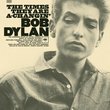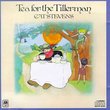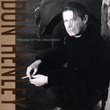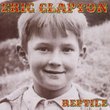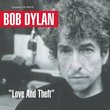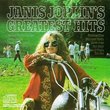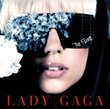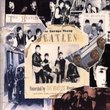| All Artists: Bob Dylan Title: Self Portrait Members Wishing: 4 Total Copies: 0 Label: Sony Release Date: 8/24/1989 Genres: Country, Folk, Pop, Rock, Classic Rock Styles: Contemporary Folk, Singer-Songwriters, Folk Rock, Country Rock, Album-Oriented Rock (AOR) Number of Discs: 1 SwapaCD Credits: 1 UPCs: 074643005029, 074643005043, 5099746011222, 5099746707729 |
Search - Bob Dylan :: Self Portrait
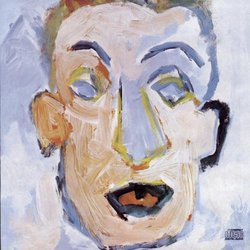 | Bob Dylan Self Portrait Genres: Country, Folk, Pop, Rock, Classic Rock
One of the most controversial albums in Bob Dylan's remarkable catalog, the 1970 double-LP Self Portrait continues to exercise a considerable fascination amongst Dylan devotees. Released on the heels of the artist's gamech... more » |
Larger Image |
CD DetailsSynopsis
Album Description One of the most controversial albums in Bob Dylan's remarkable catalog, the 1970 double-LP Self Portrait continues to exercise a considerable fascination amongst Dylan devotees. Released on the heels of the artist's gamechanging Nashville Skyline, Self Portrait offered a quirky assortment of studio and live tracks, encompassing Dylan originals as well as covers of familiar pop and folk numbers, recorded with an all-star musical cast. At the time of its original release, the sprawling, unconventional Self Portrait generated an immense amount of discussion and disagreement amongst Dylan's admirers. The ongoing controversy surrounding the album has been fueled over the years by Dylan himself. At various times, Dylan has defended Self Portrait as a heartfelt artistic statement, dismissed it as a joke and described it as a concerted effort to escape the pressures of his unwanted status as the voice of a generation. Whatever the artist's actual intentions, Self Portrait retains a unique niche in the hearts of Dylan devotees, and is often cited as an early landmark in the birth of alternative country. Self Portrait's highlights include the Dylan originals "Wigwam," later featured in the Wes Anderson film The Royal Tenenbaums; "Living the Blues," subsequently covered by artists ranging from Leon Redbone to Antony Hegarty; and "The Mighty Quinn (Quinn the Eskimo)," which Manfred Mann had turned into a British Invasion hit in 1968. The latter song is one of a quartet of live tracks drawn from Dylan's legendary performance with The Band at the historic Isle of Wight festival, along with memorable versions of the Dylan standards "Like a Rolling Stone," "Minstrel Boy" and "She Belongs to Me." Also featured are Dylan's readings of a variety of outside material, ranging from his iconic interpretation of the rural folk song "Copper Kettle" to his distinctive takes on such familiar tunes as Paul Simon's "The Boxer," Gordon Lightfoot's "Early Mornin' Rain" and the vintage Everly Brothers hits "Let It Be Me" and "Take a Message to Mary." Sundazed has restored this one-of-a-kind release to its original double-LP format. Mastered from the original analog master tapes, the album is pressed on high-quality, high-definition vinyl, with meticulously reproduced original gatefold cover art. Similarly Requested CDs
|
CD ReviewsAnother Fantastic "Worst Album Ever Made" Bud | Seminole, Texas, USA | 12/20/2003 (5 out of 5 stars) "It's ironic that most of the albums the public chooses to label as the "worst ever recorded" are often made by those who are acclaimed giants in the music world; like John Lennon and Yoko Ono's "Unfinished Music" sound collages, or Creedence Clearwater Revival's underrated, hated "Mardi Gras." And like a majority of albums critics hate, Bob Dylan's "Self Portrait" actually turns out to be a very worthy listen, even if it takes a few listens to get used to for the average Dylan fan. Released as a double album in 1970, "Self Portrait" was condemned by both reviewers and fans, who were shocked that the spokesman of their generation had not lived up to their standards. But if a performer can release a record that is regarded as a pitiful disappointment after a decade of publicly-embraced masterpieces, but with a grin on his face while doing it, it's not such a bad thing--the album saw critics claiming Dylan had somehow turned his back on his principles and was indulging in a "commercialization" of his music; critic Ralph Gleason even called for a boycott of Dylan's albums. But the bottom line was that Dylan was fed up with being hailed as a leader; in a biography by Anthony Scaduto, Dylan was quoted about this era: "I wasn't going to fall for that, for being any kind of leader...and because I wanted out, they all started to rap me." And that's the goal that makes this album so enjoyable. Didn't he tell us not to follow leaders in the first place? The title suggests that "Self Portrait" will resemble some kind of personal diary, but rather it's more of a curio, featuring some lesser known original material, a few ragged live cuts with The Band from the Isle of Wight festival, and covers of songs by the likes of the Everly Brothers, Simon & Garfunkel, and the equally brilliant singer-songwriter Gordon Lightfoot. The album often finds Dylan in a musical limbo--there's pieces of his folk period, his rock period and even his country period; it's almost like he can't decide which style would be best to use, so he employs them all. Strings and overdubbed vocals tread through the album. There's even that honky-tonk voice that first appeared on "Nashville Skyline" that comes straight from Dylan's nasal tones--it sounds like a mix of the voices of Warren Zevon, Hank Williams Jr., and Supertramp's Rick Davies. But it's an enjoyable voice nonetheless, and Dylan offers some very good music; songs that resemble the "Basement Tapes" like 'Woogie Boogie' or 'Little Sadie' add a loose feeling that suggests Dylan wanted to have as much fun as he could, knowing "Self-Portrait" would be despised. Despite any bizarreness, the album is packed full of fine moments like 'Days of 49,' the absolutely delightful 'Bell Isle,' and infamously dogged covers of 'Early Morning Rain,' 'The Boxer,' 'Blue Moon,' 'Let it Be Me,' and an exquisite if eyebrow-raising version of 'I Forgot More Than You'll Ever Know.' Consider it as Bob Dylan's own experience of "Stage Fright;" his former backing group The Band released the album of that name the same year, their reaction to the dregs of being made a public figure. But it only took them two years to reach that disdain, while if Dylan had taken ten to reach his, it certainly didn't show until in shocking confrontational form when "Self Portrait" was released. "Self Portrait" may always be recognized only as an infamously disappointing release, but it's actually one more reason to ignore the widely accepted opinion. "Self Portrait" is more of a statement than most people choose to recognize; Bob Dylan wanted desperately to discourage those who saw him as a prophet. And that's not a bad reason to make an album if you think about it." Unusual album Poodles McWorms | East Pinball, Ohio | 05/28/2006 (2 out of 5 stars) "This record differs from other Dylan ones in that, sadly, it is boring. Some of his records are great. Some of them very good. There are some mediocre ones. And only a few turkeys. Among the latter, most of them are just bad ones (weak songs, lousy musicians, poor production values). This is his only boring one." OOOH! He cracked a few eggs on this one! Hello, I'm your common sense | Somewhere down the ol' San Dusky trail | 06/07/2005 (5 out of 5 stars) "Bob Dylan, a songwriter and trolly humpin' good country artist! If you are any kind of "FAN" of Bob's, you should really like this one. Great country from an artist not yet out of his prime and infact still awaiting the true mercurial God-personified-who all the golden children whished and hoped for.
I believe that people will debate every Beatles, Beach Boys, and Bob Dylan(Huh, they all start with B's...hm...well isn't that funny, hm) for every chatroom and blog on the entirety of the internet. Forever. Yet what is most profound about this one is, well, Why? Well, I'll give you my best answer as some kind of musicologist. His Family! You Blockheads! His Family! You see, Rob Zimmerman was getting hounded by the worst of the late 60's flower babies every day in woodstock, and whereever else he went with his wife. Prophets, and the most ambiguous psuedo-philosophes any circus owner could find at the time were reading his address on bathroom walls and making exodus for his house where he was trying to raise his child. That would annoy anyone to the point of moving, and sadly in the end, divorce. Even his old girlfriend from way back in Greenwich village, New York; Joan Baez was calling him out in songs to come take hold of the whole generation-revolution-movement. Bob Dylan didn't want any of that for he had kids, a wife, and he had come from traditional roots of Minnesota and the 50's. Where his loyalty lay was with family. Bob even points to this in his new book Chronicles: "I was determined to put myself beyond the reach of it all. I was a family man now, didn't want to be in that group portrait." It can be argued that the last words about "group portrait" reflect upon his Self Portrait album. Rather than him wanting to be part of that "portrait"(view, focus) of people(society, golden children), he wanted the portrait, or his life, to belong to him, and he belonged to his family. Dylan has always summed himself up as not belonging to those "people", that, while he is modest, one belongs to oneself. In my own opinion, he saw some deep ignorance in these people. I bet he saw that the apple does not fall far from the tree, and those "evil" congressmen and "The Man" were only hereditary to all the flower babies. I think he just wanted to write songs for the heck of it, yet occasionally that entails writing for the hero. It's for sure, though, that this album served its purpose better than, maybe, a twist of style. Nashville skyline was to truly diverge from those "out of this world" poem-songs and all that electronic heroism. Yet some still were looking for that shadowy and mysterious Dylan train come with gold and sapphire for the truly faithful in the "Bob Dylan regime". Self Portrait made it seem like he just didn't have it anymore for those stand up and refuse yourself songs. It sure is sweet country, though! Not NEARLY as good as Nashville Skyline which you should also buy. I mean, just listen to that album, and then to some of that Rolling Thunder Revue, Man! Which leads me to another point: that Dylan actually lived this great figure through in 74 and 75. He actually connected with his audience again, and really raised the call before his beautiful voice started to go in the eighties. Tangled Up In Blue was a song for those hippies who had been to high to really live fully in the 60's. Idiot wind was another personal where he castigates ignorant fans, like "Like A Rolling Stone", although that was more of a screw-all of-you-who-now-live-poor-and-dumb kind of a thing. On the rolling Thunder ReVUE he sounds as though he's not only breaking up inside with his problems with his wife, but he is apoligizing for leaving everyone in the hippi dust way back. Somewhere in the packet of that set, on the liner notes, Alan Ginsberg says something about Dylan really personifying the real, Great american idol(not literal translation). Alan also hints at how he sounds like he is calling back to the 60's, and finally taking everyone up for the final "Come with me, tell your friends, it's anarchy in the U.S." Of course it could have just been the wild translucent energy that gravitated throughout the revue that makes that version of "Tonight, I'll Be Staying Here with You" so enthralling. This album, Self Portrait, recieves five stars. Because it is an essential original. Not only is it the greatest, most influential, and infamous "Get Away From Me" recording ever made, but it also actually deterred millions of fans who had until then hung on his every song. The Golden Children actually abandoned their greatest prophet at the most crucial time because of a mediocre album. This actually means that both the generation, and Bob were abandoned. This album should not be recognized for its musical mediocrity, but rather for its bonechilling showmanship and what it revealed about the laziest, most ignorant, most selfish, heartless generation ever. I can only imagine that Nixon had a good hardy laugh at Altamont; when the drippy hippies toppled on each other and really gave up their mysticism, youth embellishment, and chemicals. Everyone had to get jobs at health stores and in government(GW). Finally, I want to say that I am terribly tired of people making fun of Dylan's voice. You are an idiot if you cannot realize the expression in his songs. By far, he can deliver a song better than anyone else. I sing kinda like an opera guy, but I'd really kill for Dylan's voice. You can hear thousand years pain in his voice when he sings. In fact, that may be his hidden charm. For those long poems would mean nothing without that organic, real, human voice of his. The most Beautiful voice ever." |

 Track Listings (24) - Disc #1
Track Listings (24) - Disc #1